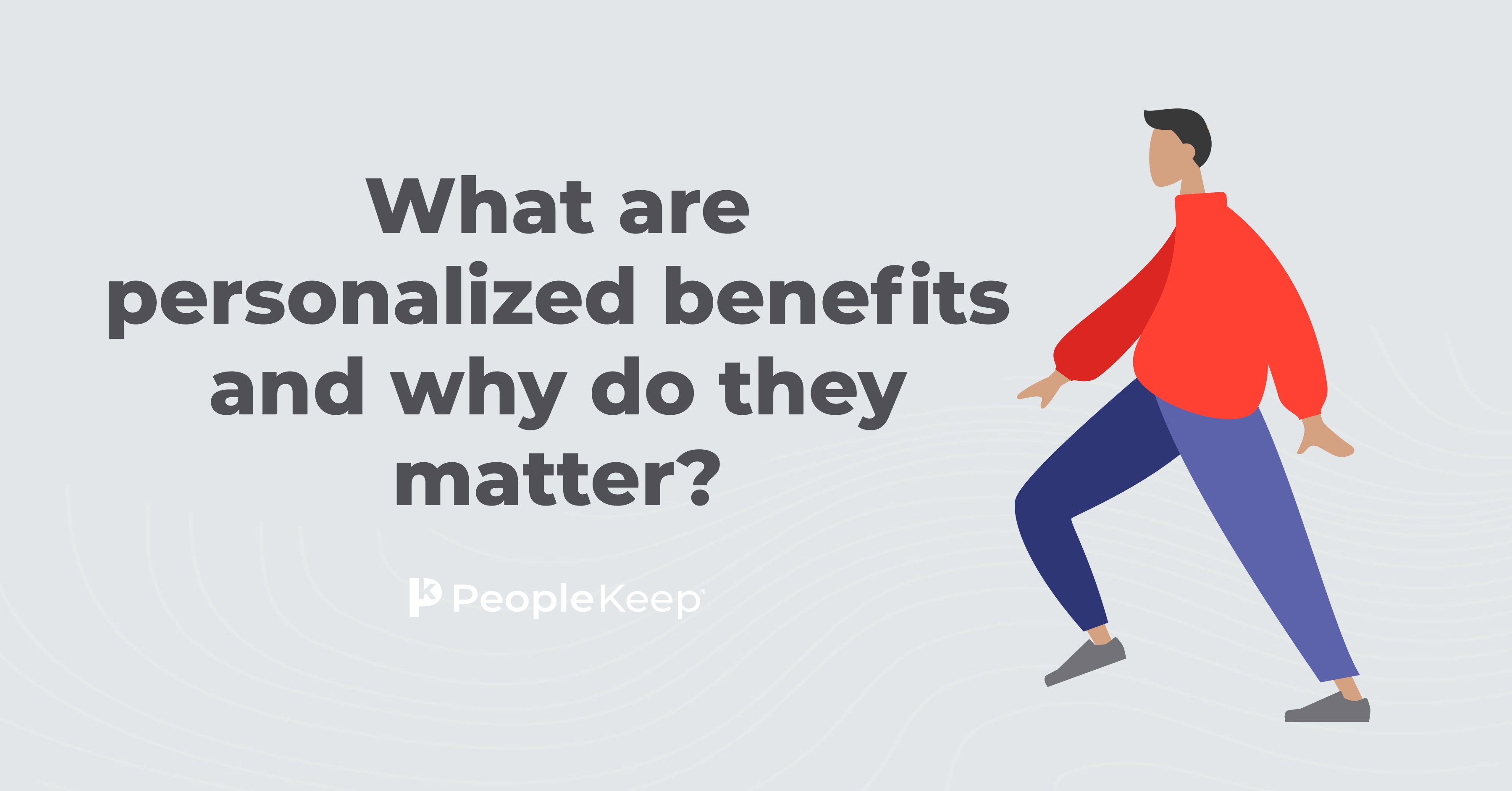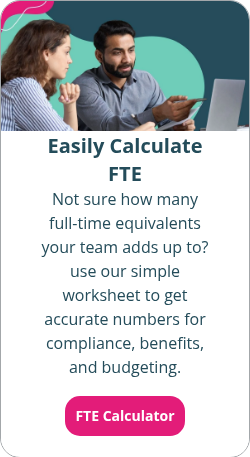What is a total rewards model?
By Chase Charaba on June 17, 2025 at 11:00 AM
If your organization struggles to attract and retain top talent, you might consider offering a more competitive salary. While adequate financial compensation can help, many factors influence whether a job candidate will apply to work at your organization or a current employee will stay.
A total rewards program can help your organization create employee loyalty, improve employee satisfaction, and boost employee engagement.
In this article, we'll explain what a total rewards program is, what rewards strategies involve, and how you can set up total rewards at your organization.
In this blog post, you'll learn:
- What a total rewards model includes.
- How implementing it can improve employee satisfaction and organizational success.
- How you can offer personalized benefits with help from PeopleKeep by Remodel Health.
What is a total rewards strategy?
Employee total rewards is a recruitment and retention strategy where organizations focus on providing and improving direct, indirect, and non-monetary compensation. It combines total compensation and benefits programs to create a more comprehensive approach to attracting and retaining workers.
Many traditional employee benefits packages focus on total compensation. With this business strategy, organizations offer their employees competitive salaries, cash bonuses, commissions, and other financial incentives. However, total compensation methods don't focus on non-monetary benefits and perks.
An organization can also offer indirect compensation, such as health insurance or wellness benefits. While indirect compensation methods come closer to a total rewards strategy, these benefit packages are still missing a few elements.
What are the elements of a total rewards system?
There are many factors to consider when implementing a total rewards package at your organization. You'll want to offer a mix of traditional compensation, employee benefits, and non-monetary perks.
Compensation
The first element of any total rewards program is compensation. If you don’t offer a salary that meets your employees’ expectations, they’ll likely leave for other opportunities. You can offer financial rewards that motivate employees in addition to a competitive salary or hourly wage.
Compensation ideas include:
- Competitive base salary
- Variable pay for achieving personal and business goals
- Cash bonuses
- Gift cards for special occasions
Employee benefits
The second element of a total rewards program is employee benefits. You'll find attracting and retaining employees more challenging without a comprehensive benefits package.
There are many traditional benefits employees have come to expect from their employers.
Traditional benefits to offer as part of a total rewards system include:
- Health benefits, such as traditional group health insurance
- Dental and vision insurance
- Retirement plans such as 401(k)s or pensions
- Paid time off (PTO)
- Employee stock options
- Life insurance
- Disability insurance
- Wellness programs
However, traditional benefits may not be enough to keep your employees happy. Today's employees want more personalization and flexibility with their package of benefits.
Non-traditional perks you can offer in your benefits package include:
- Personalized health and wellness benefits, like health reimbursement arrangements (HRAs)
- Employee recognition
- Flexible work arrangements, such as remote work
- Flexible work schedules, such as the four-day workweek
- Commuter benefits
- Education benefits, such as tuition assistance
Companies that offer total rewards generally compile their benefits and perks information and share it with their employees and job candidates. Some states may require you to disclose your employee benefits in job postings.
Employee development programs
One of the best ways to reward loyal employees and boost employee retention efforts is by offering career growth opportunities.
This can include helping employees develop new skills, hosting training and seminars, and paying for some of an employee's tuition. Your employees will see the value in these programs, encouraging them to stay with your organization. This is especially true if you allow your workers to move up within the organization based on the skills they learn.
One way to accomplish this is by offering a professional development stipend. This allows you to reimburse your employees for the personal development expenses that matter most to them, such as online courses and certifications.
Employee recognition
Finally, employee recognition is essential for a successful total rewards model. Your recognition of employees' hard work should go beyond free goodies. One way to honor your employees’ contributions in a meaningful way is by giving out individual awards or titles. This can include an employee of the month or quarter, achievement awards, and more.
Promoting your employees is also a great way to recognize their accomplishments.
Why implement total rewards strategies?
Establishing a total rewards model for compensation and benefits is essential for attracting, retaining, and engaging talented employees who are in high demand.
Attract job candidates
Sharing your total rewards in job posts will make your open positions stand out to prospective employees. When candidates can see all of the perks you offer, they can make a more informed decision about whether they want to work at your organization.
Offering a competitive salary alone isn't enough to attract highly specialized talent. Our 2024 Employee Benefits Survey found that 81% of employees believe the benefits package an employer offers is an important factor in whether they accept a job offer.
By highlighting your competitive benefits and perks, you'll be able to attract candidates better.
Reduce employee turnover
Offering the benefits, perks, and support your employees need can help you retain your current employees for longer, helping to reduce turnover rates. Offering various benefits and educating your employees on them can help you increase job satisfaction.
Employees who feel supported and cared for will be likelier to stick around.
Improve employee engagement
Offering a variety of attractive benefits and perks can also help you improve employee performance. When your employees feel taken care of and appreciated by your organization, they'll be more likely to work toward achieving company goals. This highly engaged workforce contributes to a positive work environment and improved employee morale.
Employee engagement also leads to increased business performance because your employees will be more likely to focus on organizational goals.
One way to improve engagement further is by calculating and reporting your total rewards to employees. This way, employees can see the value that your current benefits plan provides.
Why calculate your total rewards package?
When organizations implement total rewards strategies, they do so with the hope that employees will recognize the value they get by working at the company. One way to ensure your employees know which perks are available is by calculating your employee total rewards and including them on offer letters and in annual performance reviews.
Calculating your total rewards package helps employees better understand the programs, benefits, and perks you provide. This contributes to a more extensive utilization of your benefits. It also gives them a better understanding of the internal processes your human resources department has set up to support them and improve their employee experience.
How to implement a successful total rewards program
If you're ready to offer a total rewards program at your organization, there are a few things you'll need to consider.
1. Choose the right benefits and perks for your employees
When selecting which benefits and perks to offer your employees, you should provide the perks your employees want. A great place to start is surveying your employees to determine which perks they care about the most. You can also research some of the most common benefits for your industry and region.
Based on our 2024 Employee Benefits Survey, these are the most important employee benefits you can offer:
- Health benefits, such as health insurance
- Paid time off (PTO)
- Paid family leave
- Retirement savings plans
- Dental insurance
- Vision insurance
- Mental health benefits
- Flexible work schedules
Health benefits were the most popular benefit, with 92% of employees saying they value it.
Due to rising costs, many small businesses find it challenging to offer traditional group health insurance to employees. Thankfully, quality alternatives such as HRAs exist.
An HRA enables you to reimburse employees for qualifying medical expenses tax-free. This gives employees more freedom over their health benefits and grants you more cost control than you would get with traditional group health insurance.
Three of the most popular types of HRAs include:
- The individual coverage HRA (ICHRA): The ICHRA is an excellent health benefit option for organizations of all sizes.
- The qualified small employer HRA (QSEHRA): The QSEHRA is only for small employers with fewer than 50 full-time equivalent employees (FTEs).
- The group coverage HRA (GCHRA): The GCHRA, also known as an integrated HRA, is a supplemental benefit that pairs with your existing group health insurance policy to extend your benefits.
If you want to empower your employees through your benefits package, employee stipends can help. With a stipend, you can offer your employees a monthly allowance for various expenses.
This gives your employees more flexibility with their benefits instead of forcing them into a one-size-fits-all benefits program. With stipends, you can offer allowances for expenses such as health and wellness costs, home office set-up costs, cell phone reimbursement, commuter benefits, and more.
2. Provide flexibility with your rewards
Much like personalized benefits, your employees' other rewards and perks should reflect the increasing need for workplace flexibility. Your employees' wants, needs, and lifestyles change over time, as does your organization. The best total rewards are ones that are customized for each individual.
With flexible rewards, you can better respond to any changes and give your employees the freedom they want without making benefits administration difficult.
One way to implement flexibility in your total rewards program is by allowing remote work and flexible work schedules. This can contribute to a greater work-life balance since employees have more time to focus on their personal lives thanks to the elimination of commute times and rigid schedules.
3. Keep up with trends
A tight labor market can rapidly change employee benefits and recognition trends. Instead of focusing on the same perks and career development opportunities you always have, keep an eye on your competitors and your industry. Be sure to conduct regular market research on benefits and compensation trends to avoid losing your employees.
4. Seek employee feedback
When offering rewards to your employees, you'll want to evaluate the success of your program. After all, if employees can't find value in your total rewards, your program won't improve retention.
To evaluate your strategy's success, ask for honest input from employees. Based on their feedback, you can change the types of rewards and opportunities you offer. You can also measure your strategy's success by looking at how employee turnover rates have changed since implementing your program.
Conclusion
Today's employees want more than annual raises. To retain them effectively, employers should recognize their hard work through diverse rewards. By implementing a comprehensive rewards strategy, they can cultivate a more engaged workforce and improve employee retention rates within their organization.
One of the most critical elements of total rewards is offering flexible benefits. With PeopleKeep by Remodel Health's HRA administration software, you can easily set up and manage your personalized benefit in just minutes each month.
This blog post was originally published on January 4, 2023. It was last updated on June 17, 2025.
Check out more resources
See these related articles

What are personalized benefits and why do they matter?
Personalized benefits are the key to attracting and retaining top talent. Find out why they matter and how you can offer them to your employees.

How to improve employee retention with a workplace wellness program
Boost employee retention with workplace wellness programs. Explore effective employee wellness ideas to improve satisfaction, health, and productivity.

What is indirect compensation and why is it important?
Learn what indirect compensation is and why it’s crucial for recruitment and retention. Discover how benefits beyond salary can attract and retain talent.



